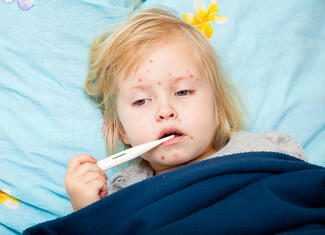Chickenpox is a contagious disease caused by the varicella-zoster virus (VZV). It causes a blister-like rash, itching, tiredness, and fever. The rash appears first on the stomach, back and face and can spread over the entire body causing between 250 and 500 itchy blisters. These lesions present in two to four successive crops. The person will eventually have lesions in all stages of development. Chickenpox can be serious, especially in babies, adults, and people with weakened immune systems. The best way to prevent chickenpox is to get the chickenpox vaccine.
Shingles, also known as zoster or herpes zoster, is a painful skin rash. It is caused by the varicella zoster virus (VZV), the same virus that causes chickenpox. After a person recovers from chickenpox, the virus stays dormant (inactive) in the body. For reasons that are not fully known, the virus can reactivate years later, causing shingles. There is a shingles vaccine, approved in 2006, available as a single dose recommended for adults 50 years and older for prevention of shingles. Vaccine recipients 50-59 years had a 67% reduced risk of developing zoster; recipients 60-69 years had a 64% risk of developing zoster. All recipients have less neuralgia, or pain, associated with shingles if they do develop a rash.

